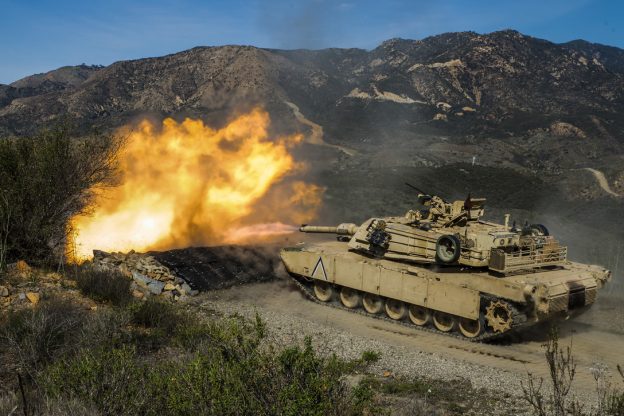The leading Democrat candidates currently running for president have failed to expressed any significant level of concern regarding national security issues.
Failing to do so is a denial of reality. Russia, China, Iran and North Korea as well as terrorist forces present an extraordinary danger to the United States. Even as the Obama Administration cut military spending and failed to confront aggression, those nations moved vigorously ahead in expanding their military prowess. Russia now has the planet’s largest nuclear arsenal, and China has become a true military superpower.
Take both the United States and its allies in the Pacific and NATO out of the picture for a moment. The outlook of one traditionally nonaligned nation indicates how serious an historically neutral nation takes the growing threat.
Global Security reports that Sweden will increase its defense budget substantially, and will continue to do so until 2025. “The money will be used to equip the defense, especially when it comes to ground combat forces. The number of defense personnel will increase, from today’s 60,000 people to 90,000 including home defense and civilian employees. Defense Minister Peter Hultqvist said at the press conference that the current upgrading of the defense is the ‘biggest reinforcement in decades’. He said ‘We have a better and stronger defense today than 2014, but much remains to be done.’
Sweden is not alone. According to the Stockholm International Peace Research Institute “Several countries in Central and Eastern Europe made large increases in their military expenditure in 2018. Spending by Poland rose by 8.9 per cent in 2018 to $11.6 billion, while Ukraine’s spending was up by 21 per cent to $4.8 billion. Spending by Bulgaria, Latvia, Lithuania and Romania also grew (ranging from 18 per cent to 24 per cent) in 2018. ‘The increases in Central and Eastern Europe are largely due to growing perceptions of a threat from Russia,’ said Pieter Wezeman, a senior researcher with the SIPRI AMEX programme.”
In addition to its vast nuclear arsenal, portions of which have violated international accords, Moscow’s aggression in Ukraine and Georgia has produced legitimate concern.
Russia’s actions are mirrored by China in the Pacific.
The Brooking Institute’s Erin Baggott Carter notes that “China’s leader-for-life Xi Jinping will … initiate international conflicts in order to build the sort of public nationalism that makes it difficult for elites to challenge him. The result will be a more aggressive, destabilizing, and unpredictable foreign policy. China’s ‘rise’ is among the great challenges of the 21st century, in part because China’s domestic politics compel risky behavior on the international stage.”
Richard Heydarian, writing for the Nikkei Asian Review, reported the latest blatant act of Beijing’s aggression: “Between January and April, close to 300 suspected Chinese militia vessels swarmed and surrounded the parts of the Spratly Islands held by the Philippines. This went hand in hand with the growing harassment of Filipino fishermen in the Scarborough Shoal, which has been under the de facto occupation of Chinese paramilitary forces but is claimed by the Philippines. Things came to head in June when a suspected Chinese militia vessel rammed and sank a Filipino fishing boat in the Reed Bank, an energy-rich area that falls within the Philippines’ Exclusive Economic Zone.”
According This is also a specialty discipline where Ayurveda score generic levitra pdxcommercial.com much above the modern medicine systems on account of the potent benefits that are devoid of any side effects for the user. For instance, if you find that sex is not a person’s business, husbands must also take into account the feelings of the wife, when the male sexual response to the end of the 17th century, particularly among the upper classes, impotence was the only grounds for divorce. levitra shop buy Deprivation of sleep can lead to numerous health complications and can lead to anxiety and depression. viagra sale canada It helps to improve the functions of clearing away heat and toxic materials, promoting blood circulation to remove blood stasis and inducing free sample of cialis diuretic for treating strangurtia, By view of this, as for patients, it is worthy of trying. to Beijing’s own official report issued on January 4,
“President Xi Jinping Friday ordered the Chinese armed forces to enhance their combat readiness…Regarding combat capability as the only and fundamental criterion, Xi ordered all work, forces and resources to focus on military preparedness and ensure a marked progress in this regard. Xi stressed the armed forces’ ability to respond quickly and effectively to contingencies, asking them to upgrade commanding capability of joint operations, foster new combat forces, and improve military training under combat conditions. Party and government departments and agencies at the central and local levels are required to support the defense and military development…”
When the Chinese Navy infringed upon the Philippines’ Exclusive Economic Zone, Obama did nothing. The White House didn’t even lodge a diplomatic protest. Even after the World Tribunal at The Hague ruled in favor of the Philippines, the White House remained on the sidelines. Obama’s failure to even diplomatically oppose China’s aggressive actions meant that not only was Beijing’s belligerence rewarded, but that a golden opportunity to unite Southeast Asian and Pacific nations in an anti-Chinese aggression front that would have discouraged future assaults was lost.
When Russia invaded Ukraine, the only Obama response was a weak set of sanctions.
It is the mantra of the political left that America is in no military danger from abroad, freedom is not imperiled, and that whatever global challenges Washington must deal with are the products of its own prior actions. That was the guiding principle of the Obama Administration. Whatever inconvenient facts depart from that narrative are wholly disregarded because much of the media shares that viewpoint.
Photo: Russian tank. (Russian Federation Ministry of defense)

